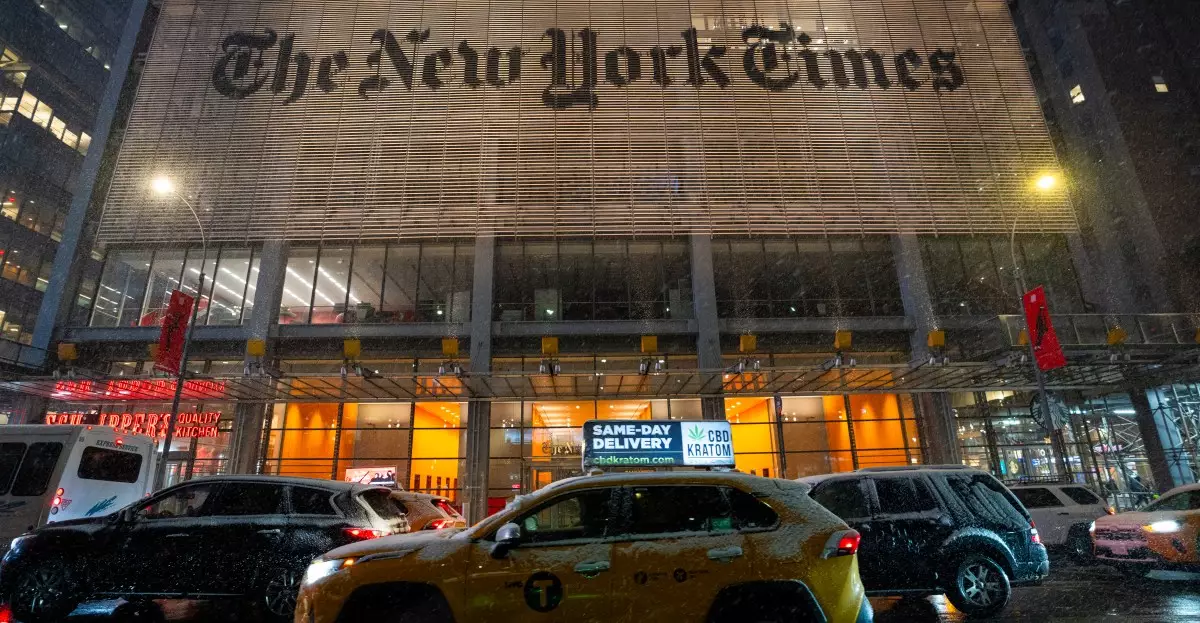In recent years, artificial intelligence (AI) has steadily infiltrated various sectors, with journalism being no exception. Major publications are increasingly exploring the potential of AI to enhance efficiency and broaden the scope of their offerings. The New York Times, one of the traditional giants of the news world, has taken a significant step in this direction by introducing a range of AI tools aimed at streamlining newsroom operations. These tools are designed to assist staff in generating editorial content, suggesting interview questions, and enhancing social media posts. The overarching aim appears to be a harmonization of human creativity with machine efficiency—an enticing proposition that raises both intrigue and concern.
The New York Times has reportedly embarked on an initiative that emphasizes AI training for its editorial and product teams. According to internal communications, this training encompasses a suite of AI tools—most notably an internal application named Echo, which assists in summarizing articles and compiling briefings. New editorial guidelines have been distributed to clarify how these tools can be leveraged, empowering staff to utilize AI for generating summaries, promotional content, and SEO-rich headlines. This strategic move reflects the outlet’s intent to not only keep pace with technological advancements but also to improve the quality of its offerings.
However, while the encouragement for staff to engage with AI may seem like a step forward in harnessing the power of technology, it brings with it a complex set of challenges. Journalists are now tasked with striking a balance between utilizing these tools for enhancements and maintaining the integrity of their work—an essential quality that readers expect from reputable publications.
Playing it Safe: Restrictions on AI Usage
Despite the enthusiasm surrounding these AI initiatives, The New York Times has notably issued stringent restrictions on how generative AI can be used within the newsroom. Editorial staff have been explicitly informed that AI should not be employed for drafting significant portions of articles or for circumventing paywalls. This cautious approach underscores the organization’s commitment to preserving journalistic standards and ensuring that all content is sufficiently vetted and fact-checked by its seasoned journalists.
The need for stringent guidelines is accentuated by the inherent risks associated with AI-generated content, including issues of plagiarism and copyright infringement. By placing boundaries on how AI can be utilized, The New York Times aims to mitigate potential legalities while simultaneously maximizing the advantages that AI offers.
While AI can bolster the efficiency of particular tasks, The New York Times emphasizes that the core of journalism will remain rooted in human creativity and accountability. The memo released last year reaffirmed the idea that “Times journalism will always be reported, written, and edited by our expert journalists.” This declaration is particularly pivotal in a media environment increasingly skeptical of the authenticity and integrity of content created with the help of AI.
Moreover, the outlet acknowledges that the integration of AI tools is not meant to replace journalistic expertise; instead, it is intended to assist in certain processes, thereby freeing reporters to focus on more substantive aspects of their craft. The principles set forth by The New York Times in May 2024 actively highlight the importance of having human oversight in any AI-assisted content creation.
AI’s Growing Presence in the Media Landscape
As The New York Times advances its AI initiatives, it is also embroiled in legal disputes concerning alleged unauthorized training of AI models using its content. This highlights a broader concern within the industry as various publications also dive into integrating AI tools, be it for basic spelling checks or generating full-length articles.
Nonetheless, this wave of AI adoption poses critical questions about the future trajectory of journalism. Will AI become an invaluable tool that enables journalists to enhance their work, or will it lead to a dilution of the very essence of reporting? As the landscape evolves, it remains imperative for both journalists and news organizations to navigate these uncharted waters thoughtfully, ensuring that technology serves as a complement to, rather than a substitute for, human insight and ethical responsibility.
While the integration of AI into journalism promises evolution and enhancement of content creation, it is crucial for traditional media outlets to uphold their foundational values. The New York Times’ cautious approach toward AI deployment emphasizes the need for a continuous commitment to journalistic integrity in an ever-changing digital landscape.

